Learn
Firearm Evidence
Rounds and Bullets Introduction
Firearms, fired bullets, and spent casings left behind at the scene can contain a variety of information for investigators. The most telling evidence is that which can link a fired bullet to a specific firearm.
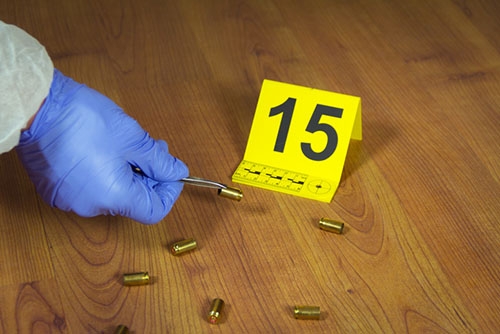
Rounds and Bullets
There are different kinds of ammunition for various firearms. The type of ammunition, or ammo, is selected by the shooter based on the firearm and the purpose of the shot.
Ammunition is often referred to in everyday conversation as "bullets," but a bullet is actually just one part of a round of ammunition. This is important because the parts of a round are all together when it is loaded into a firearm, but they break apart after being fired. Different parts of the round can be used for forensic analysis.
Anatomy of ammunition
A round of ammunition has five main parts:
- Bullet
- Cartridge or casing
- Propellant
- Rim
- Primer
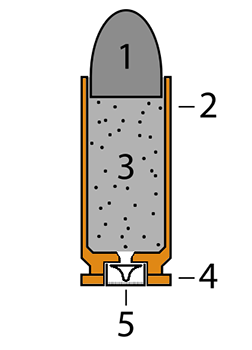
Sizes, Shapes, and Weights
- Sizes
- Bullets come in different sizes, shapes, and weights. The size of the bullet is known as the caliber, which refers to the diameter of the gun barrel and bullet used within that barrel. For example, a 0.30 caliber bullet is approximately 0.3 inches wide.
- The barrels of rifles and handguns are not smooth but contain spiral grooves known as rifling. The grooves create lands, raised areas between the grooves in a barrel or bullet casing, and grooves, indentations between the raised lands in a barrel or bullet casing. Caliber measurements differ somewhat depending on if the measurement is made from land to land or groove to groove.

- Shape
- Most current bullets have a pointed tip, but there is some variance in the shape of the tip and the design of the bottom of the bullet. Long, thin bullets have better aerodynamics and are, therefore, more effective at long ranges. Handgun bullets are shorter and wider but make up for this difference by having enough mass to be devastating at shorter ranges.
- Weight
- Typically, longer bullets are heavier, which increases their momentum, allowing them to hit harder. They also start off slower and have more recoil than lighter bullets.
Cartridges at the Crime Scene
Cartridges retrieved from the crime scene should first be accurately measured. Further examination can provide clues as to the firearm used during the shooting. Due to the great variety of bullets that are manufactured, identifying the type of bullet used at a scene is a first step for investigators as they attempt to link a bullet to a firearm.
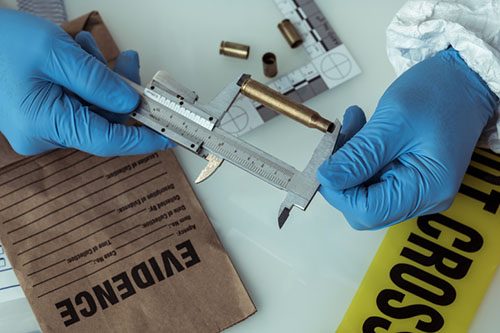
Cartridge Headstamps
Cartridges often contain a headstamp, which is produced during manufacturing. These markings can be used to determine the type of bullet as well as the manufacturer.
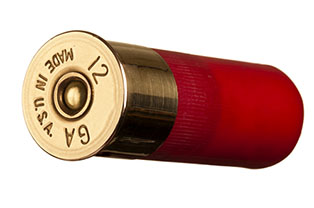
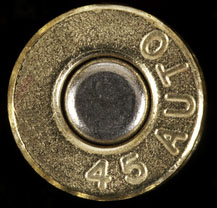
Knowledge Check #1
The type of bullet is an example of __________________ evidence
- class
- individual
Answer: a. class
Firearms
Firearm Serial Numbers
A gun may be left behind at the scene of a crime or collected from a suspect. Firearms that are legally produced are stamped with a unique serial number.
Criminals may attempt to file or grind off these serial numbers, but they are impressed below the surface of the metal. One of the responsibilities of a firearms examiner is to restore these original numbers.
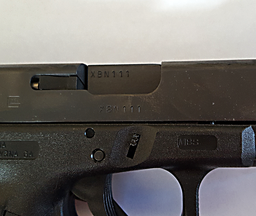
Restoring Serial Numbers
There are two methods commonly used to restore serial numbers on iron and steel.
- Fry's reagent - a mixture of hydrochloric acid, copper(II) chloride, ethanol, and water - etches into the metal, removing scratches and markings that may be covering the numbers. This process is time consuming and damaging to the evidence.
- In the Magnaflux method, a magnet is attached behind the area where the serial number was removed. Tiny iron filings are applied to the surface along with a light oil. The hope is that the iron filings will arrange themselves into the grooves, allowing the digits to be visualized. This method is non-destructive but not effective on all types of metal.
Knowledge Check #2
The type of gun used is an example of _______________ evidence, but the serial number is ____________________ evidence.
- individual; class
- class; individual
Answer: b. class; individual
Connecting the Firearm to the Cartridge or Bullet
Firing Pin Indentations
When a firing pin strikes a cartridge case, it leaves an indentation, which can be used, along with rifling marks, to link the cartridge to a specific firearm. The location at which the firing pin strikes depends on the type of gun, and the specific impression mark is unique to each weapon.
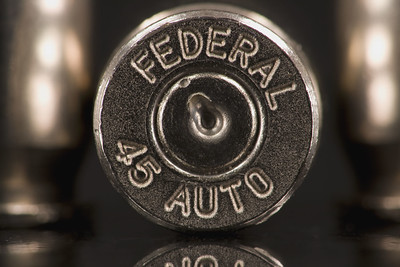
Ejecting Cartridges
Automatic and semi-automatic guns contain:
- an extractor, which removes cartridge from chamber, and
- an ejector, which throws the cartridge away from the gun.
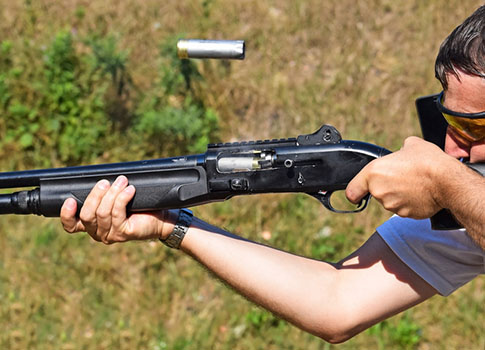
Rifling
Rifle marks are manufactured inside the barrel of rifles and handguns to make the bullet spin as it leaves the barrel, increasing its stability and accuracy. Each type of gun has its own rifling process that determines many characteristics including how many lands and grooves, the width of lands and grooves, the direction and angle of the twist. No two guns will have the exact same rifling pattern. As the bullet passes through the tunnel, the rifling creates a pattern of grooves on the bullet that is unique to that gun.
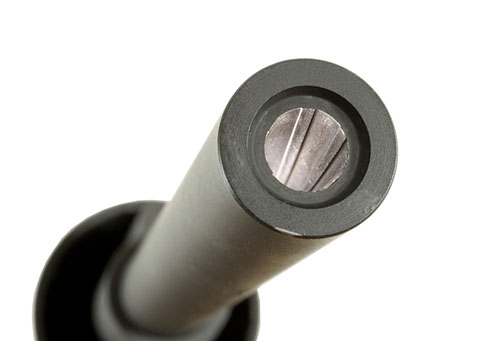
Topographical Characteristics
If a suspect weapon is not available, the number of grooves, the direction and angle of the grooves, as well as the caliber of the bullet can all be used to identify the type of gun and potentially even the manufacturer.
Take a look at a 3D topographic surface map of the base of a fired 9 mm bullet from the NIST.
Comparing Spent Bullets
Rifling can be used to compare two bullets, even from different crime scenes, to see if they were fired by the same gun.
If a suspect weapon is available, a test shot can be made, and the known and questioned bullet can be compared side by side using a comparison microscope to see if there is a match.
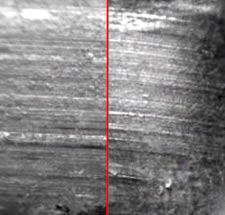
Knowledge Check #3
Sort the following firearms evidence into class or individual characteristics.
Terms:
- Type and manufacturer of gun
- Firing pin impression
- Serial number
- Rifling direction and angle
- Firing pin location
- Shared by similar guns
- Size of lands and grooves
- Rifling striations on bullet
- Extractor/ejector marks
- Unique to a single gun
Category:
- Class
- Individual
Answers:
- Type and manufacturer of gun: Class
- Firing pin impression: Individual
- Serial number: Individual
- Rifling direction and angle: Class
- Firing pin location: Class
- Shared by similar guns: Class
- Size of lands and grooves: Class
- Rifling striations on bullet: Individual
- Extractor/ejector marks: Individual
- Unique to a single gun: Individual
Conclusions after comparison
After comparison, the examiner may come to one of four conclusions:
- Identification--The agreement between the marks and/or tool exceeds that which would occur if the toolmarks were made by different tools.
- Inconclusive--Agreement between all class characteristics but insufficient evidence of individual characteristic agreement
- Elimination--Significant disagreement between class or individual characteristics
- Unsuitable--Toolmarks do not have enough marks for comparison or the marks are too small/fragmented.
These conclusions are defined by the Association of Firearm and Tool Mark Examiners (AFTE), the professional organization which sets standards and issues certification for firearm and tool mark examiners.
Firearm Examiners
Review the various responsibilities of and techniques used by firearms examiners.
Knowledge Check #X
QuestionText?
- Answer Choice
- Answer Choice
- Answer Choice
- Answer Choice
Answer: Correct Answer (include the letter and the answer)
Knowledge Check #4
Which of the following is not a responsibility of a firearms and toolmark examiner?
- gunpowder pattern testing
- cartridge case comparison
- serial number restoration
- test firing suspect weapons
- All the above are responsibilities of a firearms and toolmark examiner.
Answer: e. All the above are responsibilities of a firearms and toolmark examiner.
Knowledge Check #5
Examiners can compare striations found on a bullet casing to ____________.
- casings from other crime scenes
- test fired casings
- a national database
- All the above
Answer: d. All the above
Knowledge Check #6
The primary instrument used by toolmark and firearms examiners is ___________.
- the firing range
- the comparison microscope
- the naked eye
- the magnifying glass
Answer: b. the comparison microscope
Knowledge Check #7
In what situation is the water chamber used to test fire a weapon?
- When the firing range is occupied
- When an undamaged cartridge is needed
- When an undamaged bullet is needed
- When investigating underwater crimes
Answer: c. When an undamaged bullet is needed
Open Inside the Crime Lab: Firearms Toolmark Unit in a new window
Note: The presentation may take a moment to load.